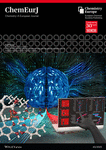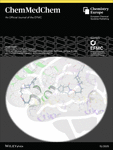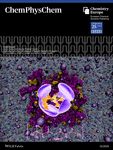Journal list menu
For full article and contact information, see Angew. Chem. Int. Ed. 1999, 38 (11), 1669 - 1678
Victory in the Race for Total Synthesis
A new, therapeutically interesting fungal substance
has been synthesized for the first time
CP-263,114 and CP-225,917 are the names of two promising natural products that could someday make their debut as pharmaceutical agents. They have now been synthetically produced for the first time by a seven-member team of chemists working with K.C. Nicolaou at Scripps Research Institute and the University of California, San Diego.
"Natural products" are what chemists call certain compounds that they unearth in a wide variety of organisms, such as bacteria or plants. Many of these - for example antibiotics - are now of great importance as pharmaceuticals. Unfortunately, natural products can often only be obtained in extremely small amounts; so, for the purposes of research and modification to improve their properties, they must be produced in the lab.
However, this is often not easy: many natural products have a very complex molecular structure, making their synthesis difficult. In their attempts to prepare such complex compounds in the laboratory, many research groups broaden their arsenal of chemical methods. For many doctoral students, work on such syntheses becomes almost like the creation of a "masterpiece"; now and then the work turns into a regular race between teams - examples of this are the synthesis of Taxol and Epothilon.
Researchers at the firm Pfizer discovered CP-263,114 and CP-225,917 two years ago in an unidentified fungus. It soon became evident that these agents hinder the formation of a cholesterol precursor in cells - giving them cholesterol-reducing properties. Additionally, they block an enzyme that plays a decisive role in the growth of cancer cells. CP-263,114 and CP-225,917 could thus have careers as new chemotherapy agents ahead of them.
Both substances consist of several intricately connected rings, made of carbon and oxygen, that must be linked in exactly the manner prescribed by nature. To find the way out of the "synthesis labyrinth" (Nicolaou) and to obtain these compounds, the Californian chemists had to develop a whole series of new strategies and reactions. Finally, after several dozen separate steps, they had a few milligrams of nature-identical substance in hand - starting from compounds that can be bought from any chemical supplier.






































